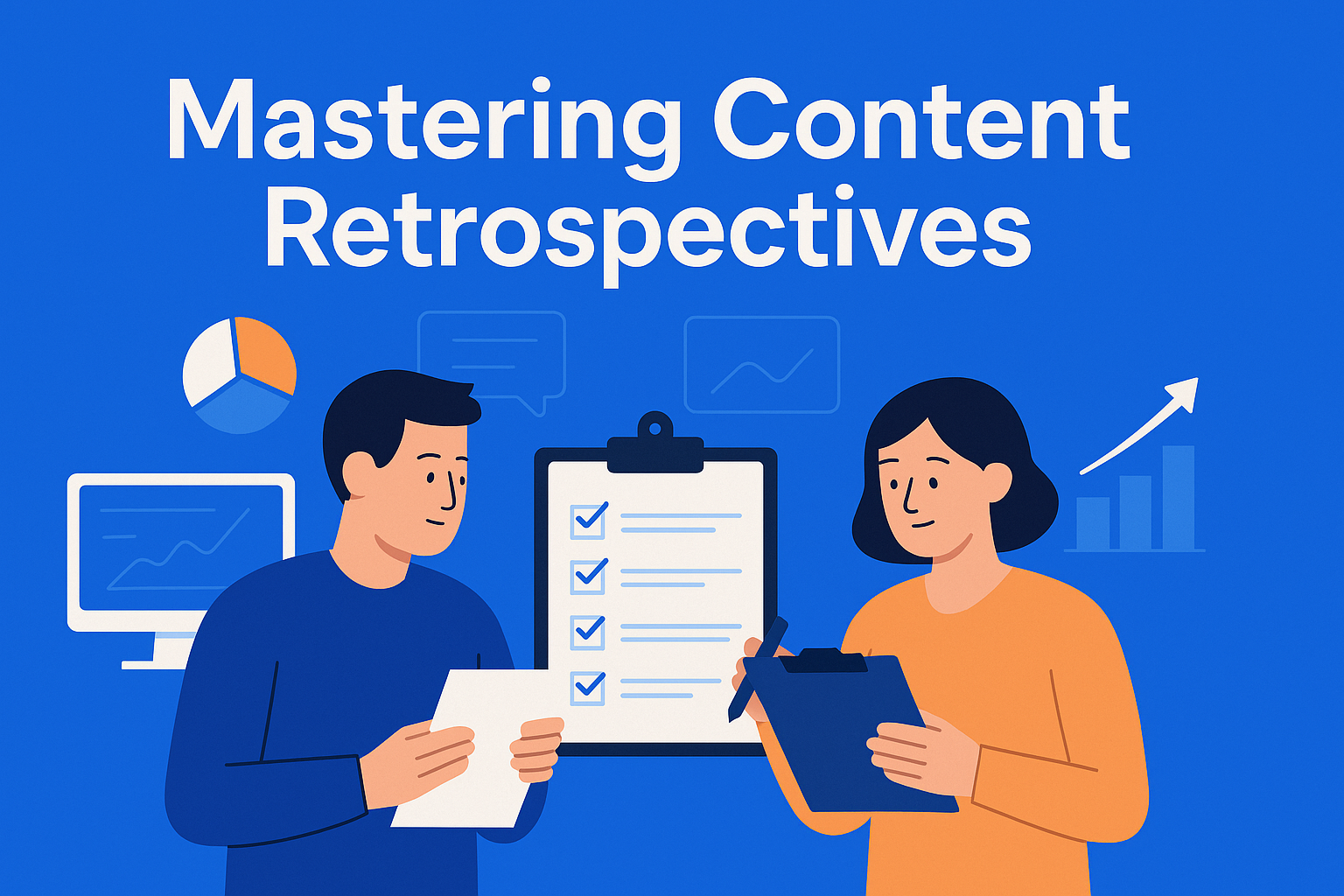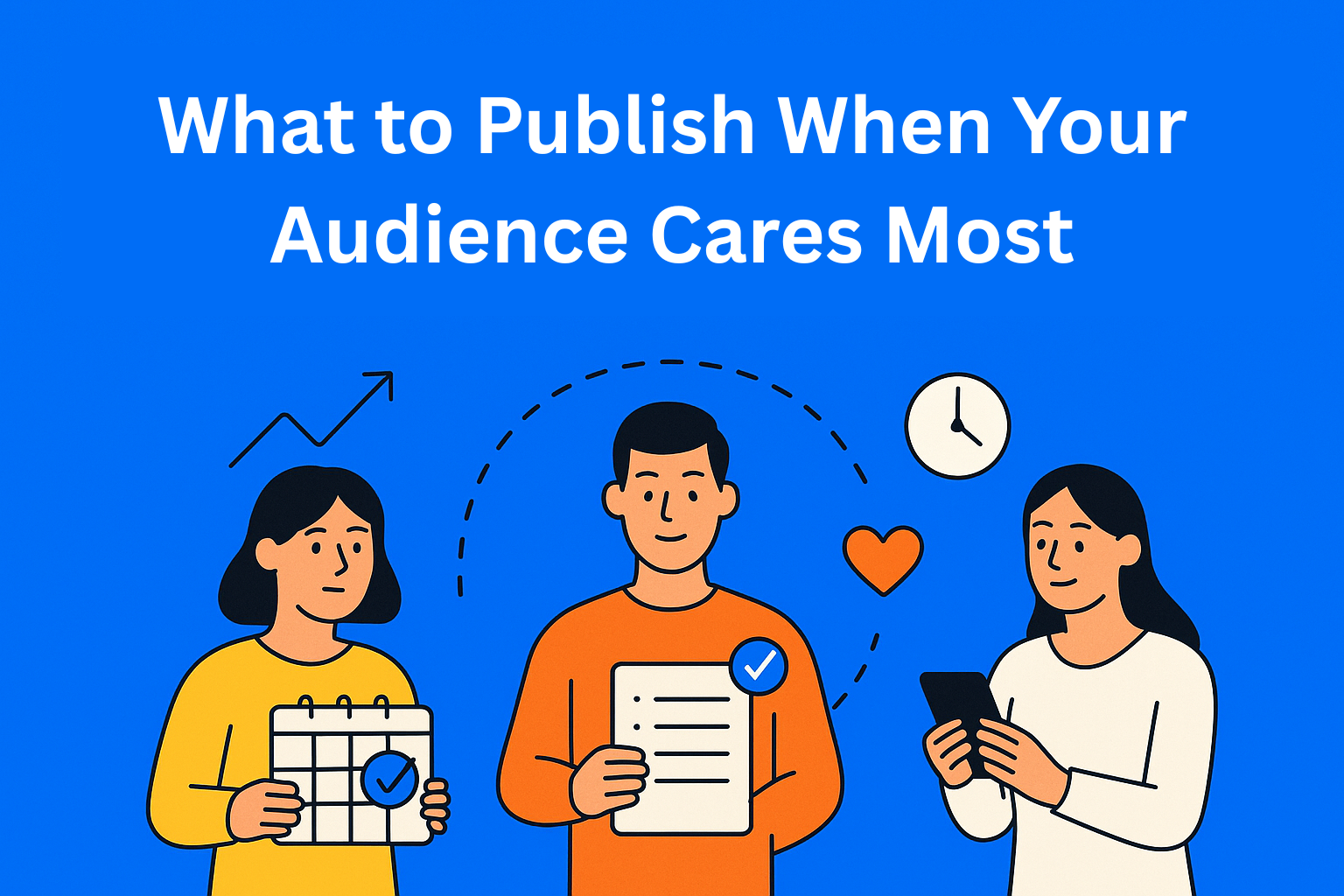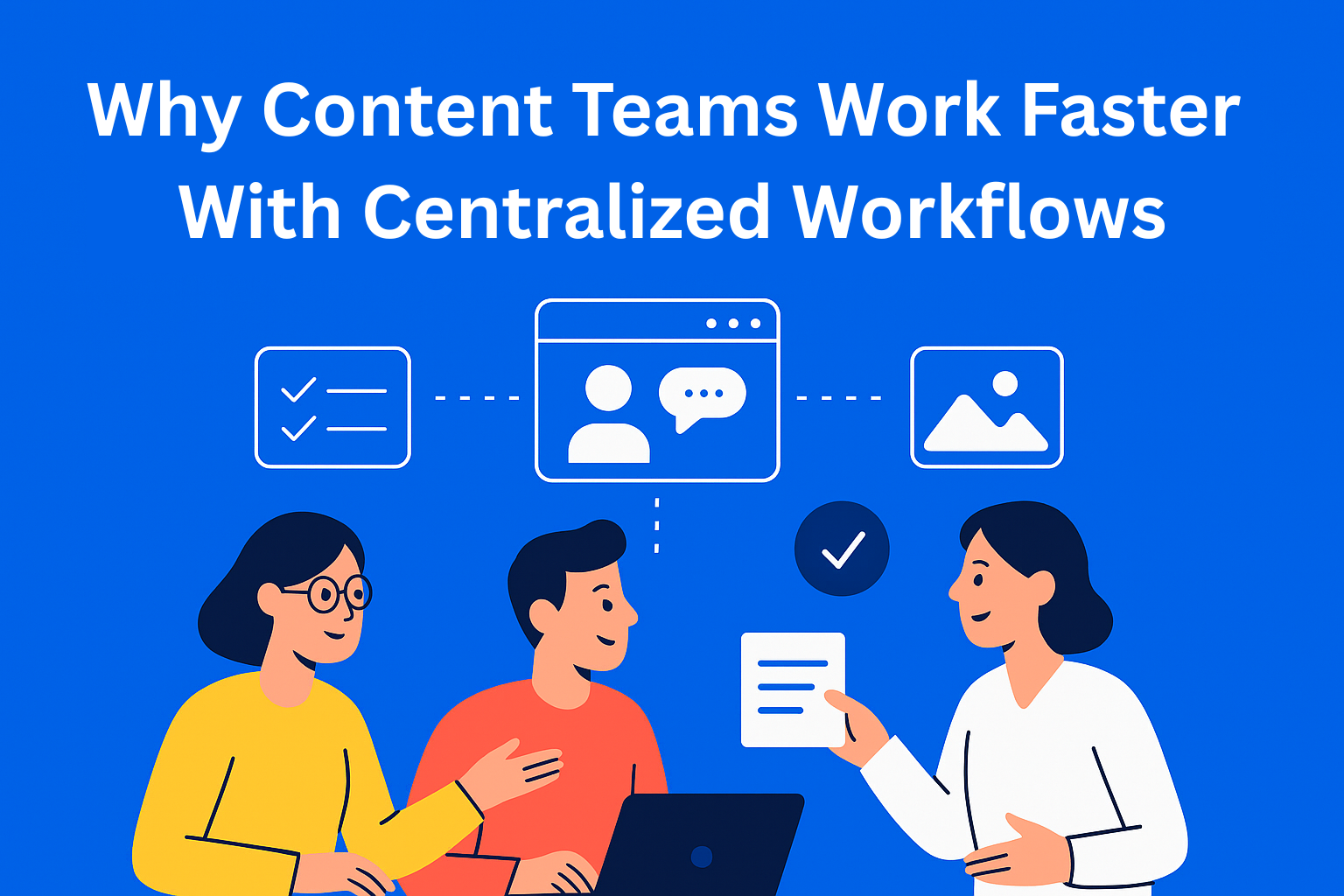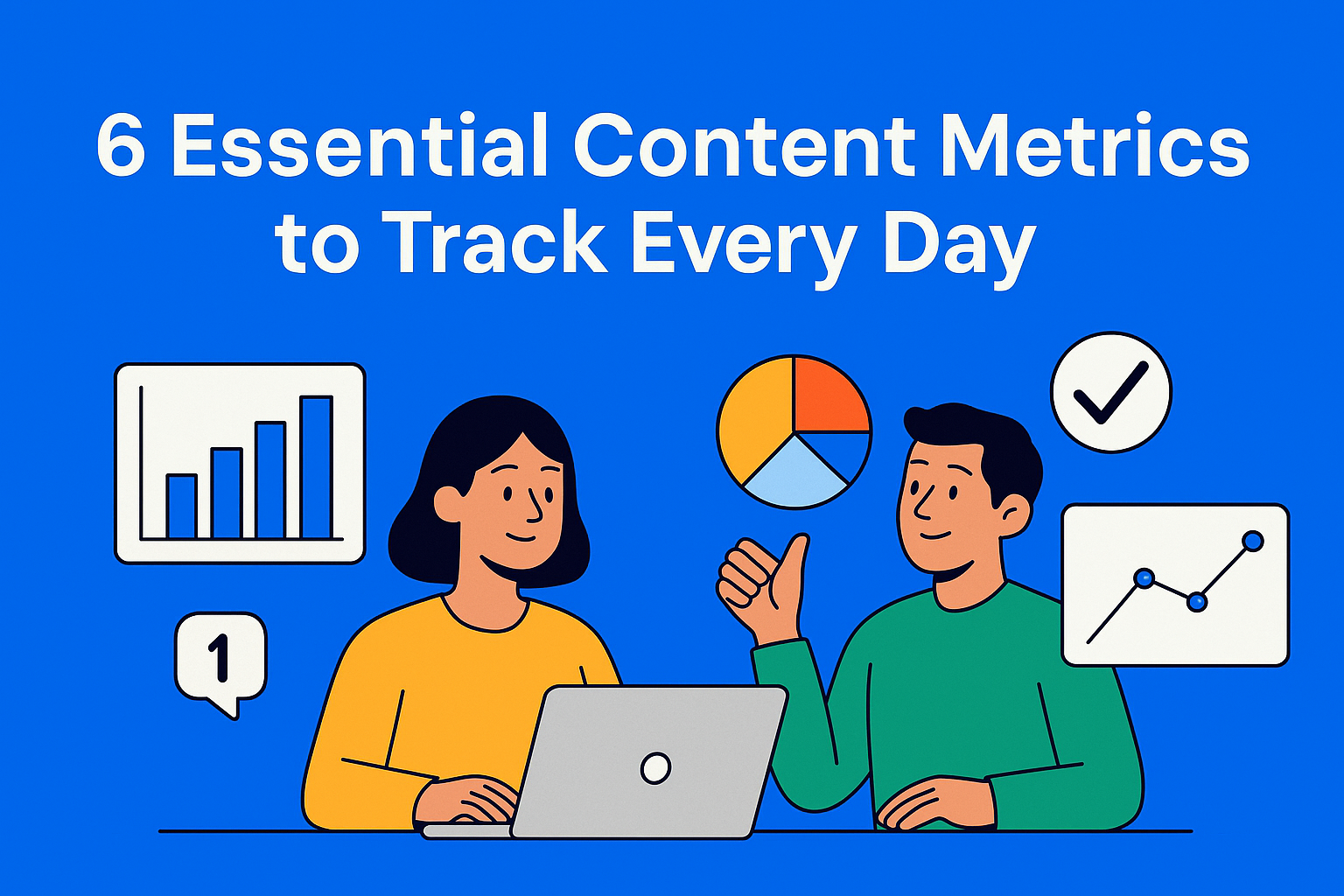Content Retrospective: What Worked & What Didn’t
Run smarter content retrospectives to uncover what works, fix what doesn’t, and boost performance. Learn how to analyze, reflect, and act on your content data, plus how EasyContent helps streamline the entire process.

In digital marketing, publishing content is only half the job. The real value comes when we pause and look back. Content retrospective is here to help us identify what worked, what didn’t, and how we can do better in the next round.
For content marketing teams, Heads of Content, VPs, and decision-makers, a retrospective is not just an analysis. It’s a strategic tool for making smarter decisions and optimizing performance. In this blog, we’ll walk you through practical steps on how to run a content retrospective that makes sense, adds value, and truly drives growth.
Key Takeaways
- Content retrospectives help teams analyze past content, identify performance patterns, and guide future strategy.
- Prepare with the right time frame, team, and data - include SEO, engagement, and feedback insights.
- Mix quantitative (traffic, conversions) and qualitative (tone, comments) data for full analysis.
- Run structured meetings using Start/Stop/Continue or other decision frameworks; document insights clearly.
- Turn lessons into actionable tasks and update templates/playbooks to scale smarter, not harder.
What exactly is a content retrospective?
A content retrospective is a structured process of analyzing previously published pieces of content to identify patterns, insights, and opportunities for improvement. Sounds like a term from Agile methodology? Well, it is! A similar principle, just applied to content ops.
Key questions that are asked:
- Which pieces of content exceeded expectations?
- Where did campaigns fail?
- Did the message resonate with the target audience?
- Was SEO working for us or against us?
For digital marketing managers, this means a direct opportunity for optimizing budgets, channels, and messaging. In a world obsessed with “what’s next,” content retrospective reminds us it’s smart to glance in the rearview mirror.
Preparation: how to organize a good retrospective
Before diving into the analysis itself, you need to set the stage:
1. Choose a time frame
A monthly or quarterly analysis makes the most sense for content-heavy teams, as well as a campaign-based review (per project or product launch).
2. Who should be involved?
Content strategists, SEO analysts, writers and editors, distribution team, and product marketing if relevant.
3. What data do you need?
- Google Analytics: visits, bounce rate, session duration
- SEO tools (Ahrefs, SEMrush): rankings, backlinks, CTR
- Social insights: engagement metrics, sentiment
- Feedback from sales, support, and the audience
Pro tip: If you use EasyContent, all your content drafts, edits, and team collaboration history are neatly organized in one place, so you don’t have to dig through folders, tabs, or scattered documents. It makes reviewing past work faster and much easier.
Analyzing published content
Here we move from preparation to action. The analysis should cover both quantitative and qualitative data.
Quantitative data:
- Top-performing content (views, shares, time on page)
- Which channels brought in the most traffic?
- Conversions: what actually contributed to your goals?
Qualitative assessment:
- Comments, shares, audience messages
- Was the tone of the content aligned with the brand?
- Which topics sparked the most discussion?
Comparing results:
Look at how some content performed compared to earlier periods or other posts on similar topics. For example, compare how one blog post did in Q1 versus another on the same topic in Q2. Even though they talk about the same thing, the results can be completely different.
SEO content retrospective specifically helps identify pages that are losing rankings, which is a signal for a refresh.
How to run the retrospective meeting
The retrospective meeting typically lasts between 60 and 90 minutes and can be held via video call or even asynchronously using tools like EasyContent or Notion. The meeting is usually moderated by the Head of Content or someone from strategy, and it’s important that one person takes notes so the insights can later be turned into concrete actions.
The agenda usually starts with a light icebreaker (e.g., “Which piece of content surprised you the most?”), then moves on to what worked, what didn’t, what to repeat, and next steps. Useful methods include Start/Stop/Continue, “5 Whys,” and priority voting.
EasyContent helps because all comments, edits, and content versions stay within the system - making retrospectives about filtering, not digging.
Turning insights into action
A retrospective without action is like an SEO audit that gets buried in a doc and never sees the light of day.
That’s why it’s important to turn every takeaway from the retrospective into a clear task. For example, if a piece of content has lost traffic, it’s a sign it needs to be updated. If blog posts are getting a lot of views but weak conversions, it’s worth testing a different CTA or added offer. When engagement is low despite a strong topic, maybe it’s time to try a new format - a video version, a carousel on social media, or even a lead magnet in PDF format.
After that, what the team has learned can be turned into a Content Playbook - a document that outlines key takeaways, what worked, and which approaches should be repeated. For example, this Playbook can be directly integrated into your brief template in EasyContent so each new content piece is built on clear guidelines that have already proven effective.
Finally, don’t forget to experiment. Set simple hypotheses to test in the next cycle - like: “If we use a more expert tone in educational texts about SaaS tools, engagement will increase by 20%.”
Common mistakes teams make
- Surface-level analysis: “This blog didn’t perform, let’s move on” without understanding why
- Focusing only on numbers: Ignoring qualitative signals
- No follow-up: Insights stay stuck in the slide deck
- Inconsistency: Doing retrospectives once a year misses monthly insights that could guide you continuously
Retrospective as a growth lever
A content retrospective is like a mirror for your content team. Without it, you’re writing in the dark, not knowing what truly resonates with your audience. With it - you optimize, learn, and scale.
And it doesn’t matter how big your team is. Whether you’re a solo content manager or running a team of 15, a retrospective helps you pause the chaotic flow and lay the groundwork for data-driven content marketing.
If you want to make this process less messy and more systematic, EasyContent can help you:
Centralize all your content, organize templates and feedback loops, automate workflows and task assignments, and run retrospectives without bouncing through 10 tabs.






